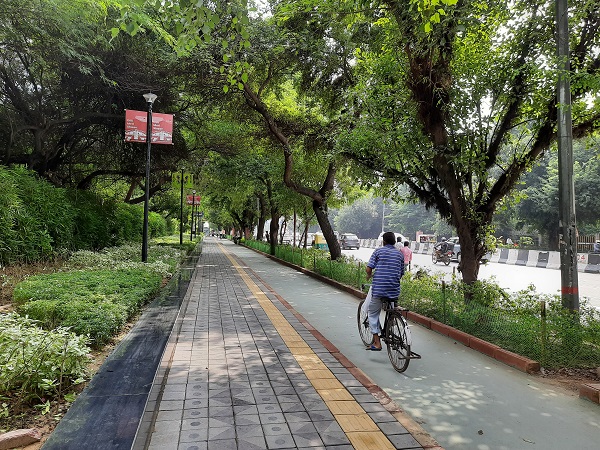The new plan states that all roads and highways in Odisha shall guarantee the demarcation of specific street space for pedestrians, cyclists, and other non-motorized road users.
Odisha intends to change its State Motor Vehicle Rules to include separate lanes for bikes and pedestrians along state and federal highways in an effort to reduce fatalities in the wake of an increase in traffic-related deaths.
The Commerce and Transport Department has proposed amending Rule 162 of the Odisha Motor Vehicles Rules, 1993, to require the state transportation authority to see to it that designated street space is marked out for pedestrians, cyclists, and other non-motorized road users on all State roads and highways by the Public Works Department, as well as other departments like rural development and the National Highways Authority of India.
“The leading agency on road safety (the state road safety council) shall ensure that the Public Works Department, other road owning departments, and the National Highways Authority of India provides pedestrian crossing facilities in every 2 kilometres on stretches of highways under its jurisdiction, passing through populated areas. According to the proposed amendment, “the Lead Agency on Road Safety shall ensure that PWD, other road owning departments, and NHAI demarcate cycling routes and walkways in all new and upgraded roads in the state, particularly in high-density residential areas and significant sites of employment.
The amendment also suggested that the lead agency on road safety would be in charge of identifying roads where private vehicle movement would be prohibited and such roads would be converted to “pedestrian only” zones after consulting with the police and works department, other road owning departments, and NHAI.
Other changes to the OMV Rules include making sure that pedestrian infrastructure, such as crosswalks, tunnels, and footover bridges, is included throughout the design stage of roads. It suggested that in cases where new roads lacked suitable pedestrian infrastructure, contractors would be required to pay fines amounting to 1% of the overall contract value, which would be deposited in the State Road Safety Fund.
The proposed amendment comes as the number of traffic fatalities in the state is rising, rising by roughly 29% from 3,931 in 2014 to 5,081 in 2021. According to information from the state government, Odisha has a death rate for traffic accidents that is 33.33% greater than the national average. In Odisha, 48.2 people per 100 accidents result in fatalities; the national average is 36.65. Odisha was one of the top 10 states with a higher accident mortality rate than the national average (deaths per 100 accidents). Odisha led the nation in hit-and-run incidents in 2018, according to data from the National Crime Records Bureau.
Due to the lockdown that followed the Covid-19 epidemic, accidents and fatalities had somewhat decreased in 2020 compared to 2019 (11.27% and 11.15%, respectively), but there had been an unusual spike in fatalities since then.
According to government statistics, Indian highways make up 4.84% of total road length yet are responsible for 63% of all traffic fatalities and 52.4% of all accidents. Highways are more prone to RTIs for a variety of reasons, including dangerous design, diverse traffic, roadways that encourage speed, increased exposure to vehicle movement, driver weariness during lengthy trips, night driving, and underdeveloped trauma treatment systems.
State and federal highways are largely linear and have enough room for distinct cycling and pedestrian lanes, according to Dilip Kumar Panda, a well-known advocate for traffic safety in Odisha. With 22 million units produced there each year, the Indian cycle industry is the second largest in the world. Therefore, it is essential that they have their own tracks on NH and state highways.
These changes are entirely feasible, but they are challenging to put into practise in places with excessive traffic, as we witnessed when cycle lanes installed in Bhubaneswar during the 2018 Hockey World Cup were quickly encroached upon. The government should make sure that there are distinct lanes for bicycles and pedestrians in addition to properly training the first responders in the event of an accident on a roadway. It’s not there right now,” remarked Panda.

